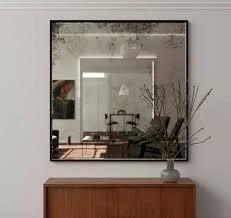

The Allure of Blue Reflective Glass A Modern Architectural Marvel
In the realm of contemporary architecture and design, the use of blue reflective glass has become a significant trend, symbolizing innovation, elegance, and a harmonious connection between nature and structure. This type of glass, which features a striking blue hue complemented by a reflective surface, serves both aesthetic and functional purposes, making it a preferred choice for architects and designers around the world.
One of the most compelling aspects of blue reflective glass is its ability to transform the appearance of buildings. When sunlight strikes the surface, the glass refracts and reflects the light, creating a mesmerizing visual effect that can change throughout the day. Early morning rays might give the glass a soft, serene glow, while the harsh midday sun can intensify its blue tones, making the building appear almost alive. Such dynamic qualities allow blue reflective glass to enhance not just individual buildings, but entire city skylines, adding a modern touch to urban landscapes.
In addition to its visual appeal, blue reflective glass offers practical benefits as well
. One of the primary advantages of using this material is its energy efficiency. The reflective properties help to reduce heat absorption, keeping the interiors cooler during hot summer days. This not only contributes to a building’s overall energy performance but also aids in reducing air conditioning costs—a benefit that resonates with both eco-conscious consumers and cost-savvy developers.
Furthermore, blue reflective glass enhances privacy while still allowing natural light to flood interior spaces. The reflective surface effectively conceals the activities within, offering occupants a sense of security. This feature is particularly beneficial for commercial buildings, high-rise apartments, and office spaces where privacy is often a concern.
The versatility of blue reflective glass also allows for diverse applications. From towering skyscrapers to elegant residential homes, it can be used in facades, windows, and even decorative elements. Designers can play with shapes and scales, creating fluid architectural forms that draw the eye and inspire admiration. Its adaptability makes it suitable for both cutting-edge designs and more traditional settings, ensuring it remains relevant across various architectural styles.
Moreover, the environmental implications of blue reflective glass are worth noting. As architects increasingly prioritize sustainability, using materials that contribute to energy savings and reduce carbon footprints becomes essential. Blue reflective glass, with its energy-efficient qualities, aligns with these goals, playing a vital role in the development of green buildings.
In conclusion, blue reflective glass stands as a testament to the intersection of art and science in modern architecture. Its stunning aesthetic appeal, combined with practical advantages such as energy efficiency and privacy, makes it a favored choice among builders and designers. As cities continue to evolve and embrace innovative design solutions, the ubiquitous presence of blue reflective glass promises to enhance both the beauty and functionality of our built environment, creating spaces that are not only visually striking but also sustainable and livable.